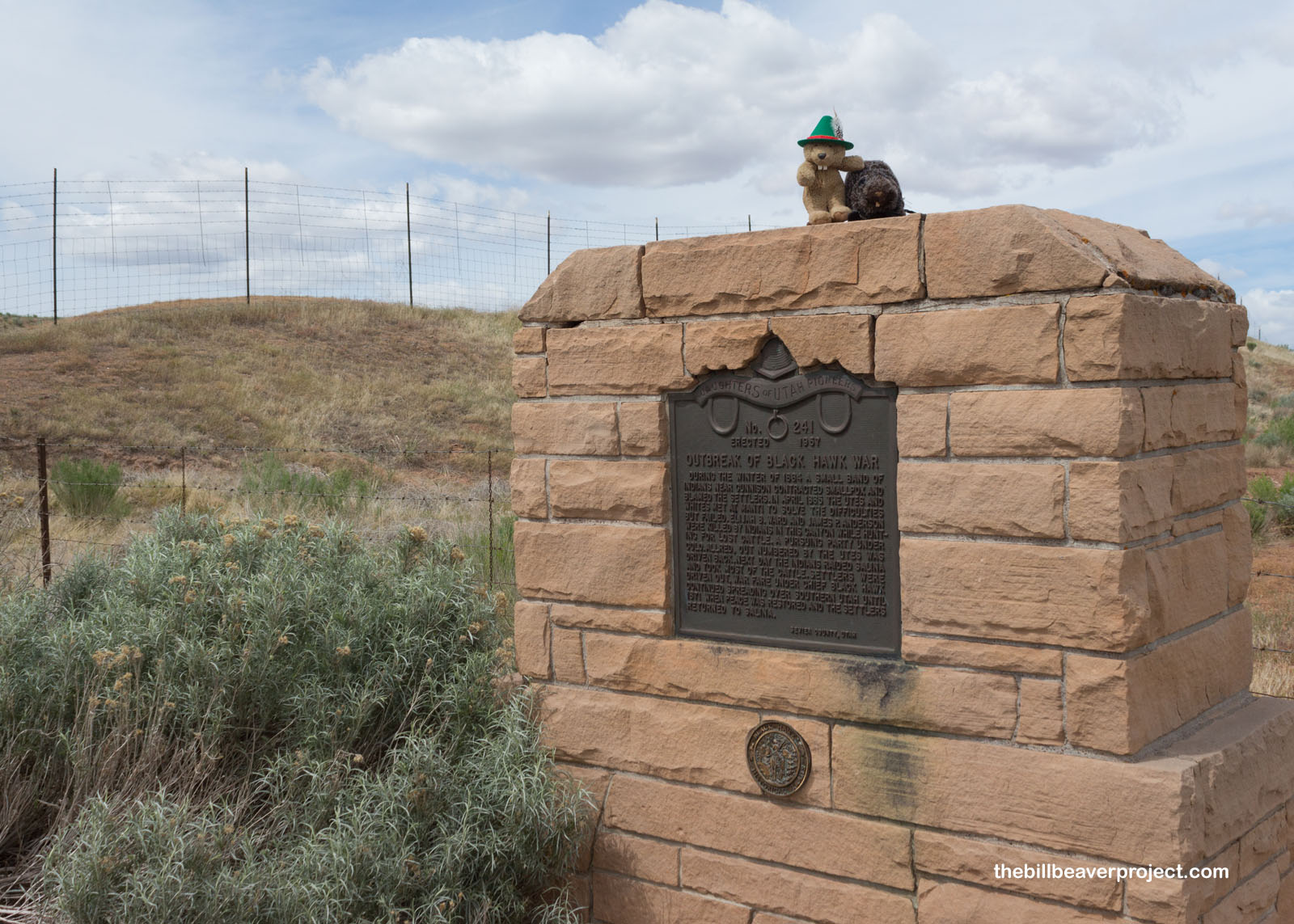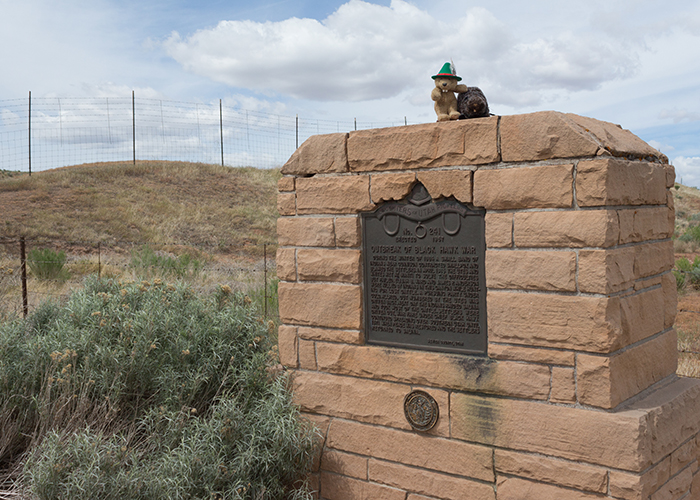 |
| Landmark #241 | Sevier County | Visited: May 13, 2020 | Plaque? YES! 🙂 |
| What is it? | A plaque commemorating the Ute raid on the town of Salina! |
| What makes it historical? | THE PLAQUE SAYS: During the winter of 1864, a small band of Indians near Gunnison contracted smallpox and blamed the settlers. In April 1865, the Utes and whites met at Manti to solve the difficulties but failed. Elijah B. Ward and James P. Anderson were killed by Indians in this canyon while hunting for lost cattle.
A pursuing party under Colonel Allred, outnumbered by the Utes, was driven back. Next day the Indians raided Salina and took most of the cattle. Settlers were driven out. Warfare under Chief Black Hawk continued spreading over Southern Utah until 1871 when peace was restored and the settlers returned to Salina. OTHER TIDBITS: This plaque leaves out a lot! For example, there was no “Chief Black Hawk” in Utah. Chief Black Hawk was a Sauk leader in Illinois back in 1832. The Mormons had been in Illinois during the last Black Hawk War, so when a new conflict broke out in Utah, Brigham Young nicknamed the Timpanogos leader “Black Hawk.” The Spanish called him Antonga, but sadly, we don’t know his real Ute name today. The arrival of Mormon settlers in central Utah not only bought smallpox and measles, but also cattle, which totally altered Ute hunting grounds. This led to widespread illness and starvation among multiple Ute tribes, including the Timpanogos, but the final insult in 1865 wasn’t just failing to reach an agreement. At Manti, settler, John Lowry, pulled the Timpanogos leader, Arropeen, off his horse and humiliated him in front of everyone! This led to seven years of 150 raids and retaliations, without federal aid because of a general desire to see the LDS territory fail. “Black Hawk” did eventually negotiate a peace in 1867, but raids continued until 1872 when the US Army finally stepped in and all remaining Ute tribes were relocated to the Uintah and Ouray Indian Reservation. Antonga died in 1870, but miners dug up his body and moved it to a museum in 1911. It wasn’t until 1996 that Eagle Scout, Shane Armstrong, led a campaign to have the warriors body repatriated to Spring Lake, where he was born, instead. That’s where it remains today! |
| How can I Help the Helpers? | HERE’S HOW:
|
| How do I find it? | Listed Directions: Hwy to Salina Canyon Road south out of Salina, UT 84654 Annotations: From Beaver: ~79mi (128km) — 1.4hrs |
| When should I go? | Whenever the mood strikes you! |
